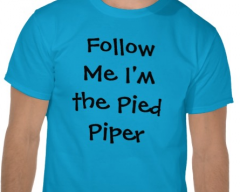 By Daniel Hebert
By Daniel Hebert
Influencer marketing and influencer outreach are the hottest topics around.
There are all sorts of tools you can use to reach your marketing goals, but before even getting into the discussion of goals and influence marketing, you need to ask yourself these questions:
- Who are you targeting?
- What are your objectives? What does a successful campaign look like?
- How will you measure success? What key performance indicators (KPIs) will indicate success?
- How do influencers integrate with your content strategy? Do you even have a content strategy?
- What’s your budget?
- Can you manage campaigns on your own? Do you need help managing campaigns?
- What’s your campaign/calendar like? Do you have a timeframe for influencer marketing?
If your answer to these questions is “I don’t know,” then you’re not ready to look at influencer outreach.
You need a strategic communications plan and the help of an agency.
If you can answer them, begin mapping out your strategy to meet those goals.
Influencers, Influencer Outreach, and Your Brand
There’s lots of ways influencer marketing can help. It can drive traffic to your website or landing pages, generate brand awareness, generate sales leads, change perceptions, or help with crisis management. The list goes on.
Influencers typically work with brands in the following ways:
- To create content (or co-create) on your brand’s site;
- To create content on their own site (earned media or sponsored posts);
- To share your brand’s content; or
- Your brand writes sponsored/promoted content on an influencer’s website.
Influencer Outreach #1 – Contributed Content
Building relationships with influencers (or contributors) is a great way to boost the visibility and reach of your content. Take a look at blogs such as Hubspot, Moz, and Spin Sucks to see guest contributions from influential writers in their industries.
This allows brands to grow their online presence, raise awareness, and publish thoughtful content with expertise they may not have in-house.
Takeaway: Networking with influencers and aggregating guest posts is a great way to publish more content on your blog. Publish guest post policies so people know you’re open to receiving content.
Measure: How many influencers can you get to work with you? How many posts do these influencers produce each month? How did the posts perform (social shares, comments, raw traffic numbers)?
Influencer Outreach #2: Driving Web Traffic
One of the most popular goals we see is a brand wanting to increase visibility and traffic to pages, in hopes of increasing opt-in subscriptions and sales.
Develop long-term relationships with influencers you can work with at any time. But if you’re short on time, or you’ve just landed a new client, you’ll need to run a sponsored post campaign to help you out.
Sponsored post campaigns can be very effective at generating traffic and awareness, if you’re working with the right person, and using the right influence tactic.
The smaller the audience, the more intimate connection an influencer has with their followers, which ultimately leads to greater influence.
You’ll also want to look at data (more than a Klout score, please) to identify the right fit for your brand: Demographic, geographic, and interest data of the influencer’s audience.
Takeaway: Use different data and search tools to find influencers that fit with your brand, and build a budget for influencer outreach. Be prepared for last minute campaigns (which usually require cash).
Measure: What’s the goal? Increased traffic to a landing page? Increased engagement? Increased conversions? Online purchases? Keep track of the budget you’re spending for each influencer, and measure your ROI by seeing how many of these KPIs each individual influencer is driving.
Influencer Outreach #3: Earned Media and Positive Awareness
Influencers can be used to create positive brand awareness, or to change people’s perceptions about a brand or cause.
HP, with help of Edelman, invited more than 600 media professionals and influencers to an event in China following some negative publicity about their company.
They showcased their innovations, which helped restored faith in the company.
They earned a ton of media and social shares from people that helped them spread the word.
Takeaway: Managing relationships with influencers, bloggers, and social enablers is very important for a brand, especially when you’re in a crisis, or you want to shift the conversation towards something more positive.
Measure: Run a sentiment analysis for both positive and negative mentions before and after your campaign. Track the change. Also, track how much positive and negative earned media you received. Comments and social media posts are a good way to get feedback you can incorporate into your business strategy.
Influencers can be a great addition to your business strategies, and help you reach your goals.
Without a strategic plan in place, and without understanding your goals and how influencers integrate with other marketing initiatives, all those influence tactics are wasted effort.